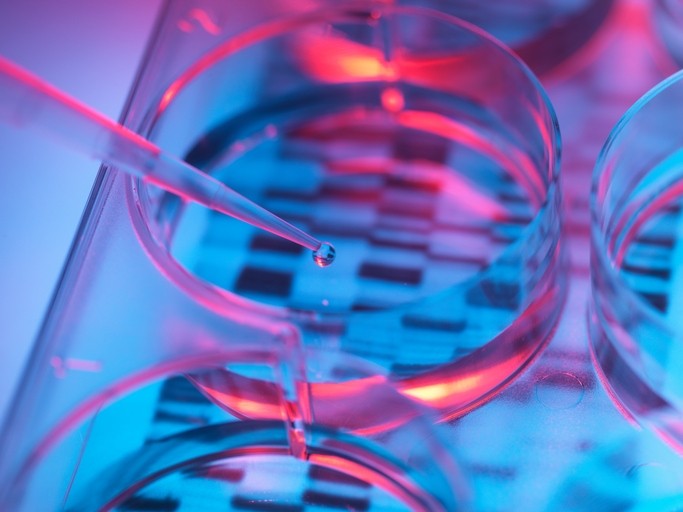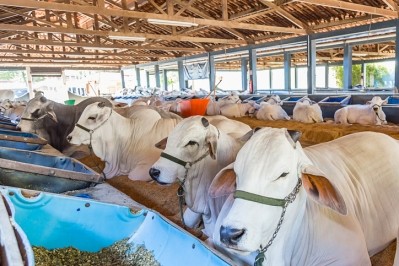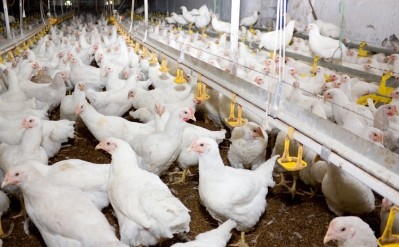Dispatches from World Nutrition Forum in Cape Town
Research further demonstrates anti-inflammatory properties of AGPs, findings can support R&D on alternatives

Despite widespread use of antibiotics for promotion of growth and controlling disease in farmed animals, the understanding of their effects on the host is still very limited, a factor hindering the creation of efficacious alternatives.
Bertrand Grenier, a scientist based at the Biomin Research Center in Tulin, Austria, told delegates at the recent World Nutrition Forum in Cape Town about how he and his colleagues have been leveraging generation sequencing (NGS) technology to unveil the mode of action of AGPs, with the end goal being the development of replacement compounds.
He spoke about how RNA sequencing, in particular, is beneficial for the study of molecular mechanisms.
FeedNavigator caught up with him after his presentation.
“With the emergence of NGS technologies, we have access to technologies that give us an overview of what is going on as a whole. You can study the expression of all the genes. You get a lot of data but you also get an overview of what is going on when you give some treatments or feed additives,” he told us.
RNA sequencing gives researchers an idea of the activity of the genes, which ones are turned on or off, the genes that are really modulated by drugs or feed additives, he said.
“We knew that AGPs, that antibiotics themselves can inhibit, can kill bacteria but [this effect is] usually when you have concentrations higher than the concentrations used in the field for growth promotion.
“But there was a reasonable assumption [first made] about 10 years ago about the anti-inflammatory properties of the AGPs, really an effect of the host itself.
“And that is why we wanted to use RNA sequencing, because we wanted to focus on [the effects of antibiotics] on the host, on the intestinal epithelium, and not on the microbiota.”
The Biomin team’s results, so far, do provide some additional evidence of the anti-inflammatory properties of AGPs as hypothesized by Niewold in 2007, said Grenier.
“Inflammation costs a lot to an animal so it is going to use nutrients to cope with the inflammation and not use them for the growth. That could be the reason why we also observe a growth promotion effect [from AGPs].”
“With RNA sequencing, we showed the same trend, [that there are] a lot of genes related to inflammation, [and the use of AGP causes] inhibition, down-regulation of these genes.”
Intestinal inflammation model
Combining the Biomin’s team data and similar data from the literature, it would seem that if you are able to reduce the inflammation in birds, then you can get a better growth performance, and that knowledge can be used to produce AGP alternatives, he said.
“We developed an intestinal inflammation model to confirm that some feed additives, some compounds can limit this inflammation.”
The model that they used was a coccidiosis model. “We know that coccidiosis induces inflammation. It is very specific though. So it is important to evaluate your compounds in other models – it could be with a different formulation of feed; a diet high in fiber could also induce inflammation, as could mycotoxins.”
More research required
Grenier stressed that a lot more work is needed to support their initial findings:
“We conducted two experiments with this inflammation model, we need more data. What we saw in regard to the mode of action of AGPs was in one experiment, in one specific tissue, at one time point, so it is important to confirm [the results], to run more experiments, to generate more data.
“For now, we have the first clues, a hypothesis and we can use this knowledge to screen new compounds, to really target this pathway.
“We use RNA sequencing to get an overview but you are not going to use RNA sequencing all the time, it is quite expensive and it is quite time consuming in terms of processing data. You can also use this data to target some genes that later on you can use as a reference to formulate feed ingredients or feed additives.”















